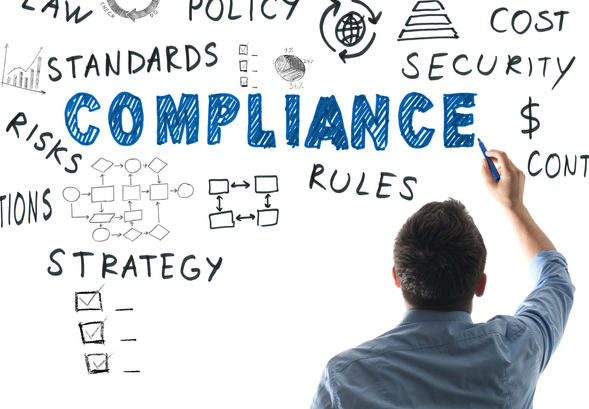Who Needs eIDAS Certificates, What Problems Do They Solve, and How Are They Implemented?
If you are anything like me, you have a new loathed word… It starts with C and ends with orona. The Coronavirus has yet again brought many countries to a halt, forced restaurants and shops to close or move online, and people and companies are yet again setting up their computers at kitchen tables and in bedrooms.
And with that setup, the challenges we faced earlier in the year are back: how to secure the remote workforce, how to sign one document when you have multiple signees or can’t get to the post office, and how to motivate yourself to exchange those jogging bottoms for something a little more dressy (or is that just me?).
Luckily there is also good news, and it started way before the world slowed down due to Covid-19. In fact, on 1st July 2016 a clever regulation called eIDAS – Regulation (EU) 910/2014 – came into effect. In a nutshell it creates electronic trust between individuals, companies and government entities by standardizing electronic identification and signatures across Europe.
Why is the eIDAS regulation so important?
The pandemic has shown us a really good example of why eIDAS is so great. It has enabled us to keep working digitally and safely. Thanks to all the security principles in place, the shift from physical to digital has been smoother than many may have expected. Of course, many services will continue being offered in person, but it’s astonishing how many things can be dealt with and resolved digitally.
eIDAS has been the European framework that has enabled secure trading on a grand scale. It has given businesses the confidence to move online and is proving trust to end customers, knowing that they are safely consuming online services.
This has in turn helped improve business efficiencies:
- Less administration
- Fewer manual and labor-intensive processes
- Lower costs and increased profits
- Safer transactions which are increasing trust and opening up a larger customer base
The many use cases of electronic Signatures (eSignatures) during or after Covid-19
The HR department that is making a job offer to a new employee
Long gone are the days of sending printed CVs through the mail, and we’ve become more and more comfortable interviewing via video chat recently. Yet employment contracts are still often sent as a printed version. But this is on the brink of wide-scale digitalization.
With a qualified signature both the company representative as well as the future employee can significantly speed up the contract acceptance process while increasing trust, that the correct people have signed the contract. Electronic identification can prove the identity of the new starter.
The Sales representative that is closing the deal with a company in another country
In the past, at least some stages of international business contracts would have happened in person. Contracts would have been signed with the two company representatives in a room together. With digital signatures physical presence is becoming less relevant. Even huge contracts can be signed in an instant and a digital signature based on eID gives validation of the buyer’s identity.
The family that is buying a new home
Buying a new house has traditionally meant folder upon folder of paperwork: evaluations, surveys, contracts, insurances, etc. With the help of qualified signatures the buying process is now moving to digital and what’s even better: it’s helping speed up the formerly tedious and long processes. Sellers, buyers, as well as lenders can be safe to assume that digital signatures have the same legal reliability as hand-written signatures.
The startup that is offering a new FinTech technology integration
The traditionally restricted and regulated financial industry has seen innovation over the last few years with the PSD2 regulation. It gives more financial players in the industry a chance to develop new technologies (apps and mobile services, for example) that connect directly to banks and big financial players. With a qualified PSD2 certificate for website authentication and electronic seals all parties – banks, FinTechs and customers – can be sure that any information exchanged remains confidential.
The procurement department that is receiving a huge stock supply order
The logistics and transport industry has seen a big shift to digital, but one aspect of the job still requires putting pen to paper: the delivery notes. With digital signatures, goods can be accepted and information can be sent back to the sender in real time.
The management team that is signing the yearly audit
During audit time it is not uncommon for the complete leadership team to come together to review and sign the yearly audit report. Not only is it tricky to manage busy executive schedules, but in times of a pandemic, it’s also a big risk getting all decision makers into one place at the same time. With digital signatures those reviews can happen via video calls and documents can be signed in minutes digitally, instead of requiring the management team to be physically present.
The university that is handing out graduation certificates
In the past graduation has been a joyful occasion to get together and celebrate. 2020 has looked very different for many schools and universities. Graduates had virtual ceremonies and many educational institutions have adopted digital graduation certificates. Signed with an electronic or digital seal, they offer the same legal status for school leavers, but offer a higher level of protection against fraud.
We have put together even more eIDAS use cases here.
How eIDAS signatures can power a digital transformation
If the pandemic had struck two or even one decade ago, many businesses would have struggled far more to switch to remote working so seamlessly. It shows how far we’ve already come on our journey to becoming a fully digital society.
Legislation has been a factor both accelerating and stopping the digital transformation. Legislation has created a legal basis for the acceptance of digital signatures and identities, giving users the assurance that their signatures and identities will equal the traditional ways. But the strict framework involved with determining what is acceptable when it comes to digitally signing has also put people off fully embracing this new way of doing things.
That’s why we developed an easy-to-understand reference guide to eIDAS. In it, you’ll get background information on what eIDAS is, learn the differences between basic, advanced and qualified signatures, and find guidance on which eSignature assurance level is required and when.
Download your free Guide to eIDAS: Implications for eSignatures and Recommendations for How to Stay in Compliance.
If you still have any questions about compliance, implementation or usage, please get in contact with one of our digital signing experts today.








